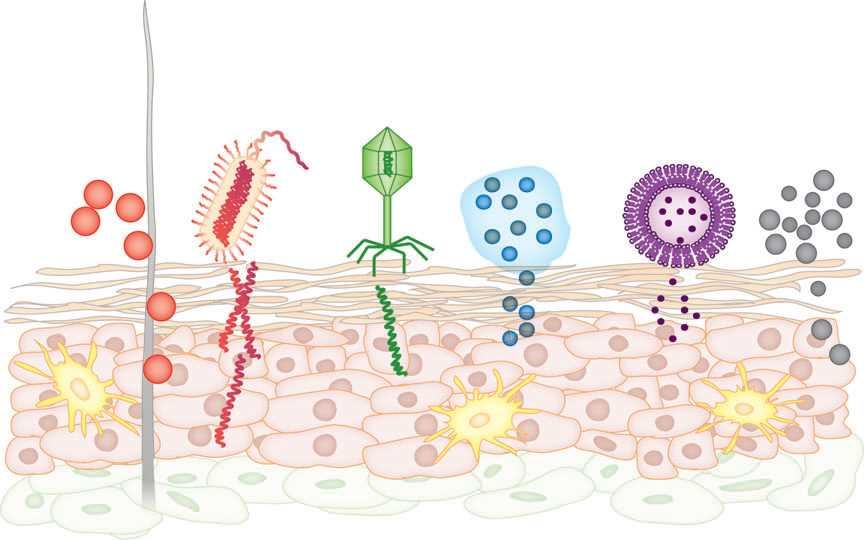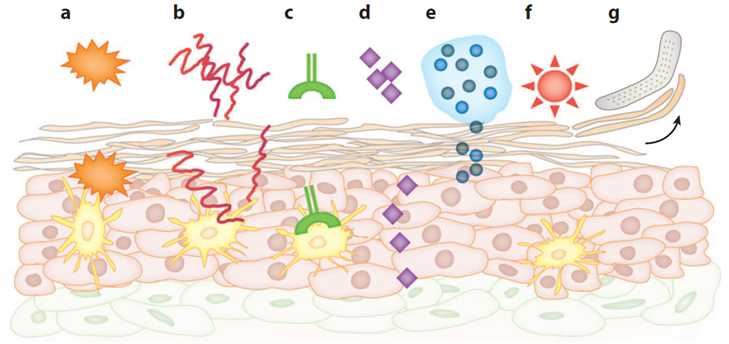Creative Biolabs has been a long-term expert in the field of antibody production. Based on our years of experience and advanced platform, now we can provide varies of immunization strategies for antibodies production. Transcutaneous immunization is one of these novel methods to induce antigen-specific antibodies.
Introduction of Transcutaneous Immunization
Transcutaneous immunization is a novel strategy to deliver antigen into recipients, in which antigen is topically applied to the skin with adjuvants to induce specific immune response. Skin is the largest organ in animals’ body composed of three layers, the stratum corneum, epidermis, and dermis. In the past decades, the immunizations of intramuscular, subcutaneous, and intradermal are largely performed via needles and so that results in several drawbacks related to safety and compliance. Compared with the needle-based technologies, transcutaneous immunization offers several advantages. The feature of needle-free avoids the dangerous antigens transmission between recipients and researchers to make the whole operation safe. The requirement of antigen is less as the method offers a high-efficient immune response.
 Fig.1 Vaccine delivery technologies used for transcutaneous immunization. (Karande, P.; Mitragotri, S. 2010)
Fig.1 Vaccine delivery technologies used for transcutaneous immunization. (Karande, P.; Mitragotri, S. 2010)
Vaccine Delivery Technology
The main constraint in delivering vaccines across the skin is that the intact skin barrier is impermeable and the permeability of molecules is really low. In this case, we have developed varies of vaccine delivery technologies and different kinds of adjuvants to solve this problem. The vaccine delivery technologies include vaccine carriers, nanoparticles, viral vectors, E. coli vectors, vesicular systems, microemulsions, and permeation enhancers.
Adjuvants in Transcutaneous Immunization
As the adjuvants play important roles in transcutaneous immunization, a wide range of adjuvants including bacterial toxins, cytosine-phosphate-guanine motifs, toll-like receptor ligands, chemicals, hyperthermia, and barrier disruption have been studied for the applications. In general, the selection of the optimal adjuvants largely depends on the desired type of immune response and the purpose to reduce the adverse inflammatory consequences. So the choice of effective adjuvants become an important step.
 Fig.2 Adjuvants used for transcutaneous immunization. (Karande, P.; Mitragotri, S. 2010)
Fig.2 Adjuvants used for transcutaneous immunization. (Karande, P.; Mitragotri, S. 2010)
Transcutaneous Immunization Protocol
In general, the operation of transcutaneous immunization can be divided into three steps roughly. In the first step, the uppermost layer of the skin needs to be removed to let the antigen enter. In the second step, the antigen complex is loaded on the shaved skin for more than three hours. In the third step, after 2 or 4 weeks of the first dose, the antigen needs to be re-applied to the recipient in the same way as the first immunization to boost the immune response. Detection of antigen-specific antibody response via ELISA.
As a pioneer and the undisputed global leader in antibodies production, Creative Biolabs offers the best service and the most qualified products to satisfy each demand from our customers. If you are interested in our antibody production service via transcutaneous immunization. Please do not hesitate to inquire us for more details.
Reference
All listed services and products are For Research Use Only. Do Not use in any diagnostic or therapeutic applications.